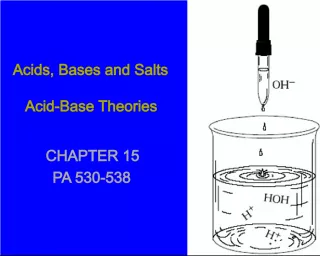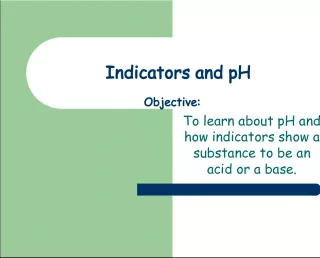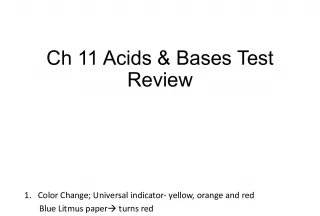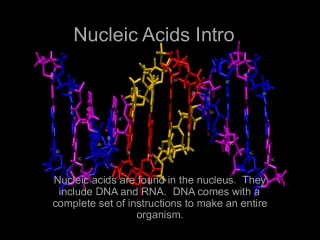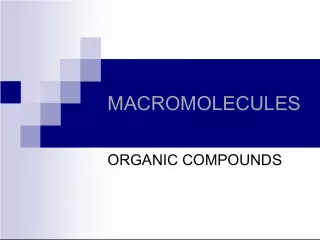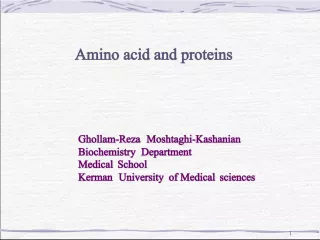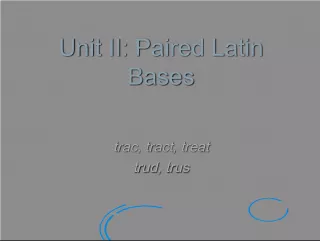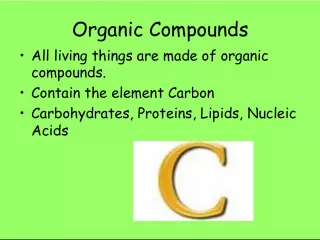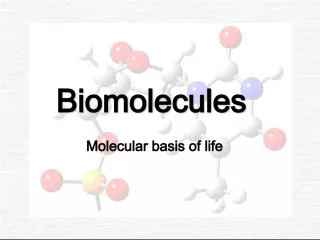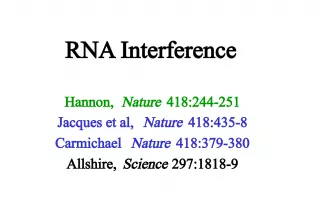Titrating Polyfunctional Acids and Bases
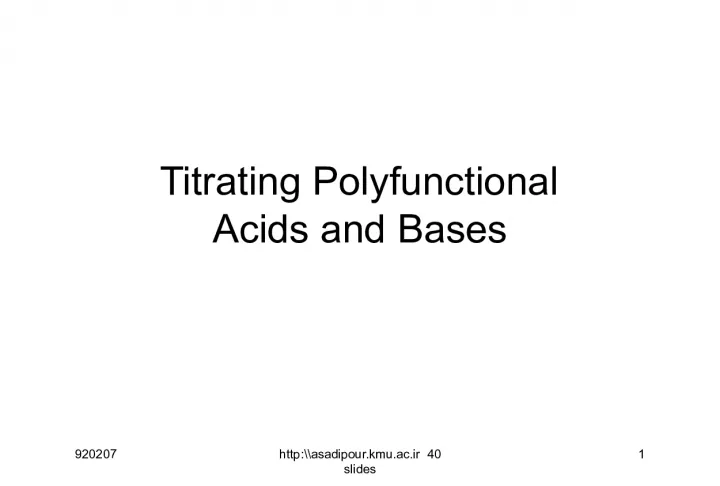

This presentation consists of 40 slides that cover the topic of treating complex acid-base systems. Complex systems are defined as solutions made up of an acid or base that has two or
- Uploaded on | 2 Views
-
 danielarce
danielarce
About Titrating Polyfunctional Acids and Bases
PowerPoint presentation about 'Titrating Polyfunctional Acids and Bases'. This presentation describes the topic on This presentation consists of 40 slides that cover the topic of treating complex acid-base systems. Complex systems are defined as solutions made up of an acid or base that has two or. The key topics included in this slideshow are . Download this presentation absolutely free.
Presentation Transcript
Slide1Titrating PolyfunctionalAcids and Bases 920207 1 http:\\asadipour.kmu.ac.ir 40 slides
Slide21. Treating Complex Acid-Base Systems• Complex systems are defined as solutions made up of: (1) An acid or base that has two or more acidic protons or basic functional groups H 3 PO 4 Ca(OH) 2 (2) Two acids or bases of different strengths HCl + CH 3 COOH NaOH + CH 3 COO- 920207 2 http:\\asadipour.kmu.ac.ir 40 slides
Slide3)3) An amphiprotic substance that is capable of acting as both acid and base HCO 3 - + H 2 O CO 3 2- + H 3 O + HCO 3 - + H 2 O H 2 CO 3 + OH - NH 3 + CH 2 COO - + H 2 O NH 2 CH 2 COO - + H 3 O + NH 3 + CH 2 COO - + H 2 O NH 3 + CH 2 COOH + OH - 920207 3 http:\\asadipour.kmu.ac.ir 40 slides
Slide4• 920207 4 http:\\asadipour.kmu.ac.ir 40 slides K b3 K b2 K b1 K a1 ×K b3 =K w K a2 ×K b2 =K w K a3 ×K b1 =K w K a1 =1×10 -2 > K a2 =1×10 -7 > K a3 =1×10 -12 K total =K a1 × K a2 × K a3 =1×10 -21
Slide5pH of H3 PO 4 1. Calculate the pH of 0.100M H 3 PO 4 solution. 920207 5 http:\\asadipour.kmu.ac.ir 40 slides H + is not negligible
Slide6pH of HA- pH of HA - solution HA - A 2- + H + HA - H 2 A + OH - 920207 6 http:\\asadipour.kmu.ac.ir 40 slides K a2 K b2 K a1
Slide7pH of HA- Calculate the pH of 0.100M NaHCO 3 solution. K a2 ×C HA - = 1×10 -10 ×1.00 >>K w ……. K w is negligible 920207 7 http:\\asadipour.kmu.ac.ir 40 slides K a1 =1×10 -6 > K a2 =1×10 -10
Slide8pH of HA- Calculate the pH of 0.0100 M NaH 2 PO 4 solution. 920207 8 http:\\asadipour.kmu.ac.ir 40 slides K a1 =1×10 -2 > K a2 =1×10 -7 > K a3 =1×10 -12 K a2 ×C HA - = 1×10 -7 ×0.01 >>K w ……. K w is negligible
Slide9pH of HA- Calculate the pH of 1.00 ×10 -3 M Na 2 HPO 4 solution. K a2 ×C HA - = 1×10 -10 ×0.001 =1×10 -13 K w isnot negligible 920207 9 http:\\asadipour.kmu.ac.ir 40 slides K a1 =1×10 -2 > K a2 =1×10 -7 > K a3 =1×10 -12
Slide1092020710 http:\\asadipour.kmu.ac.ir 40 slides
Slide1192020711 http:\\asadipour.kmu.ac.ir 40 slides
Slide1292020712 http:\\asadipour.kmu.ac.ir 40 slides
Slide1392020713 http:\\asadipour.kmu.ac.ir 40 slides
Slide1492020714 http:\\asadipour.kmu.ac.ir 40 slides
Slide1592020715 http:\\asadipour.kmu.ac.ir 40 slides
Slide1692020716 http:\\asadipour.kmu.ac.ir 40 slides
Slide1792020717 http:\\asadipour.kmu.ac.ir 40 slides
Slide1892020718 http:\\asadipour.kmu.ac.ir 40 slides
Slide1992020719 http:\\asadipour.kmu.ac.ir 40 slides
Slide2092020720 http:\\asadipour.kmu.ac.ir 40 slides
Slide2192020721 http:\\asadipour.kmu.ac.ir 40 slides
Slide2292020722 http:\\asadipour.kmu.ac.ir 40 slides
Slide2392020723 http:\\asadipour.kmu.ac.ir 40 slides
Slide2492020724 http:\\asadipour.kmu.ac.ir 40 slides
Slide25sulfuric acid is unusual in that one of its protons behaves as a strong acid in water and the other as a weak acid(K a2 = 1.02 X 10 -2 ). Let us consider how the hydronium ion concentration of sulfuric acid solutions is computed using a 0.0400M solution as an example. H 2 SO 4 →H + +HSO4 - SO4 2- + H + We will first assume that the dissociation of HSO 4 is negligible because of the large excess of H 3 0+ resulting from the complete dissociation of H 2 SO 4 . Therefore, This result shows that [SO 4 - ] is not small relative to [HSO 4 ], and a more rigorous solution is required. From stoichiometric considerations, it is necessary that Mixture of weak and strong acids 920207 25 http:\\asadipour.kmu.ac.ir 40 slides [SO 4 ] = [H + ] - 0.0400 [SO 4 ] = [H + ] - 0.0400 [H + ] = 0.0400 + [SO 4 2- ] [H + ] = 0.0400 + [SO 4 2- ] C H 2 SO 4 , = 0.0400 = [HS0 4 - ] + [SO 4 2- ] C H 2 SO 4 , = 0.0400 = [HS0 4 - ] + [SO 4 2- ] [HSO 4 - ] = 0.0800 - [H 3 O + ] [HSO 4 - ] = 0.0800 - [H 3 O + ] [H + ] ≈ [HSO 4 ] ≈ 0.0400 M [H + ] ≈ [HSO 4 ] ≈ 0.0400 M
Slide26sulfuric acid is unusual in that one of its protons behaves as a strong acid in water and the other as a weak acid(K a2 = 1.02 X 10 -2 ). Let us consider how the hydronium ion concentration of sulfuric acid solutions is computed using a 0.0400M solution as an example. H 2 SO 4 →H + +HSO4 - SO4 2- + H + We will first assume that the dissociation of HSO 4 is negligible because of the large excess of H 3 0+ resulting from the complete dissociation of H 2 SO 4 . Therefore, Mixture of weak and strong acids 920207 26 http:\\asadipour.kmu.ac.ir 40 slides [H + ] = 0.0400 + [SO 4 2- ] [H + ] = 0.0400 + [SO 4 2- ] [HSO 4 - ] = 0.0400 - [SO 4 2- ] [HSO 4 - ] = 0.0400 - [SO 4 2- ]
Slide27Curves for the titration of strong acid / weak acid mixture with 0.1000 M NaOH. Each titration is on 25.00 ml of a solution that is 0.1200 M in HCl and 0.0800 M in HA. 920207 27 http:\\asadipour.kmu.ac.ir 40 slides
Slide28curves for the titration of 25.00 ml of polyprotic acid with 0.1000M NaOH solution .A)0.1000 M H 3 PO 4 , B) 0.1000M oxalic acid, C) 0.1000 M H 2 SO 4 920207 28 http:\\asadipour.kmu.ac.ir 40 slides K a1 =5.6 × 10 -2 and K a2 = 5.4 x 10-5 K a1 =1×10 -2 > K a2 =1×10 -7 > K a3 =1×10 -12 K a2 = 1.02 × 10 -2
Slide29Titration of 20.00 ml of 0.1000 M H2 A with 0.1000 M NaOH. For H 2 A, K a1 = 1.00 × 10 –3 and K a2 = 1.00 × 10 – 7 . Titration curves for polyfunctional acids 920207 29 http:\\asadipour.kmu.ac.ir 40 slides
Slide30titration of 25.00 ml of 0.1000m maleic acid with 0.1000M NaOH.920207 30 http:\\asadipour.kmu.ac.ir 40 slides HOOC-C=C-COOH pKa1=1.89 ,pKa2=6.23
Slide31Fractional composition diagram forfumaric acid (trans-butenedioic acid). Fractional composition diagram for maleic acid (Cis-butenedioic acid). 920207 31 http:\\asadipour.kmu.ac.ir 40 slides Z- HOOC-C=C-COOH E- HOOC-C=C-COOH pK a1 =3.05 ,pK a2 =4.49 pK a1 =1.89 ,pK a2 =6.23
Slide32amino acidsalanine The amine group behaves as a base , while the carboxyl group acts as an acid . Aspartic acid 920207 32 http:\\asadipour.kmu.ac.ir 40 slides
Slide331-Determining the pK values for amino acids Amino acids contain both an acidic and a basic group. 920207 33 http:\\asadipour.kmu.ac.ir 40 slides NH 2 -CH 2 -COOH + NH3-CH2-COO - Zwitterion formation + NH 3 -CH 2 -COO - + H 2 O NH 2 -CH 2 -COO - + H 3 O + + NH 3 -CH 2 -COO - + H 2 O + NH 3 -CH 2 -COOH + OH - Ka×Kb= ??!!!!
Slide342-Determining the pK values for amino acids Amino acids contain both an acidic and a basic group. 920207 34 http:\\asadipour.kmu.ac.ir 40 slides NH 2 -CH 2 -COOH + NH3-CH2-COO - Zwitterion formation + NH 3 -CH 2 -COOH + NH 3 -CH 2 -COO - NH 2 -CH 2 -COO - K b K a K a1 =5×10 -3 K a2 =2×10 -10
Slide35curves for the titration of 20.00ml of 0.1000m alanine with A) 0.1000 M NaOH B) 0.1000M HCl. 920207 35 http:\\asadipour.kmu.ac.ir 40 slides A B
Slide36•The zwitterion of an amino acid , containing as it does a positive and a negative charge, has no tendency to migrate in an electric field, • whereas the singly charged anionic and cationic species are attracted to electrodes of opposite charge. • NH 2 -CH 2 -COO - + NH 3 -CH 2 -COOH • No net migration of the amino acid occurs in an electric field when the pH of the solvent is such that [anionic] = [cationic], which is pH dependent. • The pH at which no net migration occurs is called the isoelectric point ; this point is an important physical constant for characterizing amino acids. The isoelectric point is readily related to the ionization constants for the species . Thus, for glycine, Iso electric point : The pH at which the average charge of the polyprotic acid is zero 920207 36 http:\\asadipour.kmu.ac.ir 40 slides + NH 3 -CH 2 -COO -
Slide371-Determining iso electric point for amino acids 920207 37 http:\\asadipour.kmu.ac.ir 40 slides + NH3-CH2-COO - Zwitterion formation
Slide382-Determining iso electric point for amino acids 920207 38 http:\\asadipour.kmu.ac.ir 40 slides + NH 3 -CH 2 -COOH + NH 3 -CH 2 -COO - NH 2 -CH 2 -COO - pK a1 =2.35 K a2 =9.87
Slide39Method1=method2 Ka= Ka2 ,,,,,,,,,,,, Kb= Kb2
Slide40For simple amino acids, K a and K b are generally so small that their quantitative determination by neutralization titrations is impossible. Amino acids that contain more than one carboxyl or amine group can sometimes be determined. If the K a values are different enough (10 4 or more), stepwise end points can be obtained just like other polyfunctional acids or bases as long as the K a values Formol titration 920207 40 http:\\asadipour.kmu.ac.ir 40 slides + NH 3 -CH 2 -COO - + OH - Product + NH 3 -CH 2 -COO - + HCOH CH2=NCH2COOH
